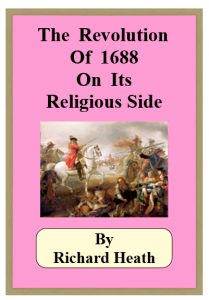‘To condemn those who in the flames invoke the name of Jesus Christ is no light matter” — Anne Dubourg[1]
IT IS A THOUSAND PITIES that English history is treated alone and without reference to that of Europe. The great man of the later Stuart period was Louis XIV, and he set the fashion to Society in his age. Charles II and James II followed his example, and worked for the same ends.
Nothing more natural: they were bone of his bone, and flesh of his flesh, and largely educated under the same influences. Bourbon – Medici – Guise, brought up in France under a bigoted Catholic mother, and dazzled by the blaze and blare of their illustrious relative at Versailles, how could they do other than try to effect in England what he had done in France?
And they found a great part of the people and most of the leaders in church and state blindly ready to assist their purpose. What king was ever welcomed to the throne with more intense enthusiasm than Charles II, or was maintained upon it by more devoted loyalty? Macaulay tells us that every servant-girl in London went into mourning at his death; and before he expired all in the room, including Bishop Ken, fell on their knees and invoked his blessing as their common father[2].
He had a parliament as entirely devoted to his person as if he had himself nominated the members, and he kept that parliament in existence for eighteen years. Charles II alone knew what he was aiming at, but neither ministers nor parliament seemed to have known where they were drifting.
One minister after another found him out, and then they fell, and at last the Cavalier Parliament itself got into a panic and ended by aiding and abetting the infamous concocters of the Popish Plot. But there was and had been a real plot to turn England into a Romanist despotism, and the dominant party had been so bent in destroying the work of the Puritans
